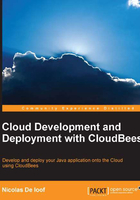
So, which platform?
With the previous definition of platform, you just have a faint idea; your understanding about PaaS is more than IaaS and less than SaaS. The missing definition is to know what the platform is about.
A platform is a standardization of the runtime for which a developer is waiting to do his/her job. This depends on the software ecosystem you're considering. For a Java EE developer, a platform means having at least a servlet container, managing DataSource to access the database, and having few comparable resources wrapped as standard Java EE APIs. A Play! framework developer will consider this as overweight and only ask for a JVM with web socket's support. A PHP developer will expect a Linux/Apache/MySQL/PHP (LAMP) stack, similar to the one he/she has been using for years, with a traditional server hosting service.
So, depending on the development ecosystem you're considering, platforms don't have the exact same meaning, but they all share a common principle. A platform is the common denominator for a software language ecosystem, where the application is all that a specific developer will write or choose on their own. Java EE developers will ask for a container, and Ruby developers will ask for an RVM environment. What they run on top is their own choice.
With this definition, you understand that a platform is about the standardization of runtime for a software ecosystem. Maybe some of you have patched OpenJDK to enable some magic features in the JVM (really?), but most of us just use the standard Oracle Java distribution. Such a standardization makes it possible to share resources and engineering skills on a large scale, to reduce cost, and provide a reliable runtime.